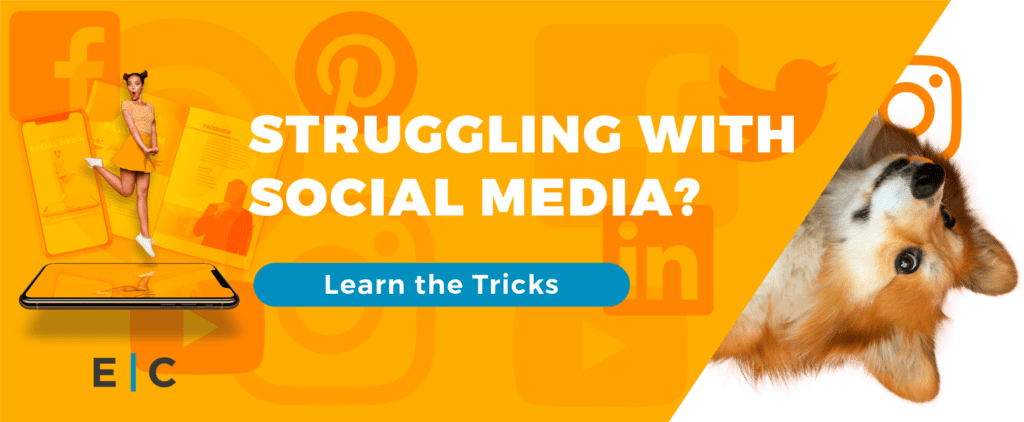Four months ago, I was researching online social media kits. As I was browsing through the competing options I noticed they had one flaw in common; they were focusing on the wrong metrics. Increasing followers, driving website traffic, increasing leads and boosting engagement are all great metrics, but they aren’t THE metrics to focus on.
Let me explain. There are two types of metrics, Tactical and Goal-Oriented. Tactical metrics, like the ones mentioned above, should never be the end goal of your social media strategy. They are simply metrics used to measure your progress towards reaching a greater goal. Goal-oriented metrics are the ones that offer long-term value.
Check out the examples below to see how tactical metrics relate to goal-oriented metrics:
Tactical metric: Follower growth
Goal-oriented metric: Brand affinity and brand advocate growth
Tactical metric: Social media reviews
Goal-oriented metric: Social proof for customer acquisitions
Tactical metric: Audience engagement
Goal-oriented metric: Consumer insights
Tactical metric: Website traffic
Goal-oriented metric: Sales & revenue
What good is a social media kit that’s not focused on helping business owners achieve their brand goals? It’s good for day-to-day tasks but nothing long-term.
Not to worry, we took all our research and created a social media kit that will have your brand using proven tactics to achieve long-term, value-driven goals in no time.
A Goal-Oriented Social Media Kit
Why is social media important to your brand? A typical response to this question is usually, “increasing brand awareness,” or “driving more traffic to my website.” While there’s nothing wrong with those goals they don’t get to the point.
Brands are on social media to make money.
If you can’t use social media to increase revenue then your efforts aren’t increasing the value of your brand. Here’s how you can fix that problem: formulate and implement a social media strategy.
High-performance social media strategies have seven elements that you need to learn before implementing your own strategy:
1. Set SMART goals
2. Follow best practices
3. Choose social platforms used by your audience
4. Optimize the sizing of your images
5. Increase efficiency by scheduling social posts
6. Choose content that performs well on individual platforms
7. Be proficient with metrics
Understanding the advantages of these seven elements will help you formulate a social media strategy that leads to exceptional goal-setting and achievements.
Mastering Best Practices
Taking the time to learn social media best practices will pay off dividends for many years to come. By implementing the principles and methods found in the best practices guide, you can create and share content that has the greatest potential to drive revenue.
Committing to best practices will help you identify the most advantageous benefits your brand can leverage on each social media platform.
7 social media best practices with revenue-earning potential:
1. Set measurable goals
2. Choose the right platforms
3. Complete ALL account information
4. Brand your accounts
5. Engage your audience
6. Post consistent, high-quality content
7. Add value & stay relevant
Remember, your audience doesn’t care about you or your brand. All they care about is how you can help them. Make your social media posting strategy as valuable as possible by offering solutions, tips and educational content.
Create an Efficient Scheduling Process
Posting on social media isn’t a strategy. You need to know why you’re posting, what you’re posting, when you’re posting and who you’re posting for. Essentially, you need to create an organized posting schedule that allows you and your team to operate more efficiently.
Of all the social media optimization methods I’ve ever used, scheduling content and organizing it with a content calendar has been one of the most valuable. It allows you to save massive amounts of time while posting more strategically.
Optimize Your Image Sizing
Social media images are as important as the copy in each social post. Your ideal customers are just as likely to click on an image as they are to read your headlines. That means your images need to be sharp, striking and high-quality.
Social media is easily one of the most visual representations of your brand. Make sure every piece of content is up to par with your standards.
Discover and Define Your Purpose on Social Media
Discovery starts with questioning the status quo. If you have kids you’re no doubt familiar with this line: “Are we there yet?” Kids ask a million questions every day because they’re constantly trying to discover. They want to understand how things work, what their role is and how they’re going to get from A to B.
Adults are no different. We continue asking questions as we mature. The only difference is we often don’t voice those questions. Here’s my advice; vocalize your questions. This is especially important when you’re discovering your brand’s purpose on social media.
One of the best ways to formulate a social media strategy that fits the mission of your brand is to ask probing questions.
Focus on Revenue Generation
If you’re not using social media to drive revenue growth you need to begin implementing a strategy. Every day you post another aimless piece of content is a another day you’ve lost potential revenue.
Build a strategy, implement the strategy, follow social media best practices and focus on goal-oriented metrics to improve your performance.
-FINAL(01-00)-White&Blue-01.svg)





